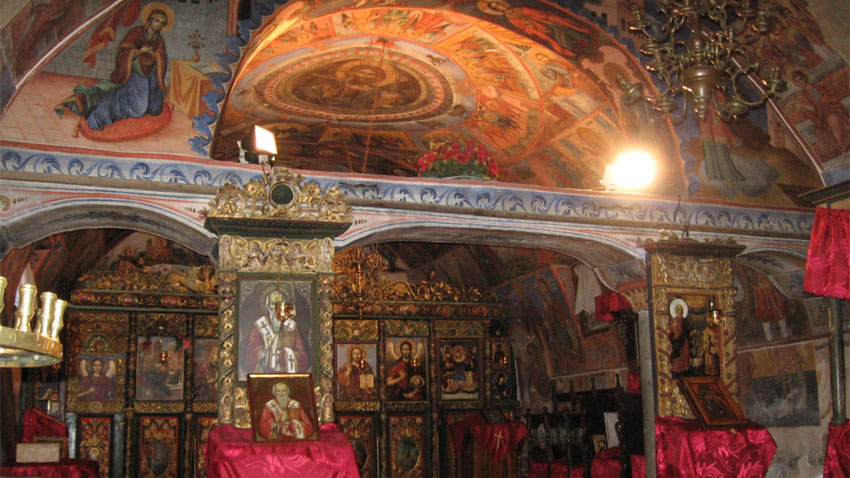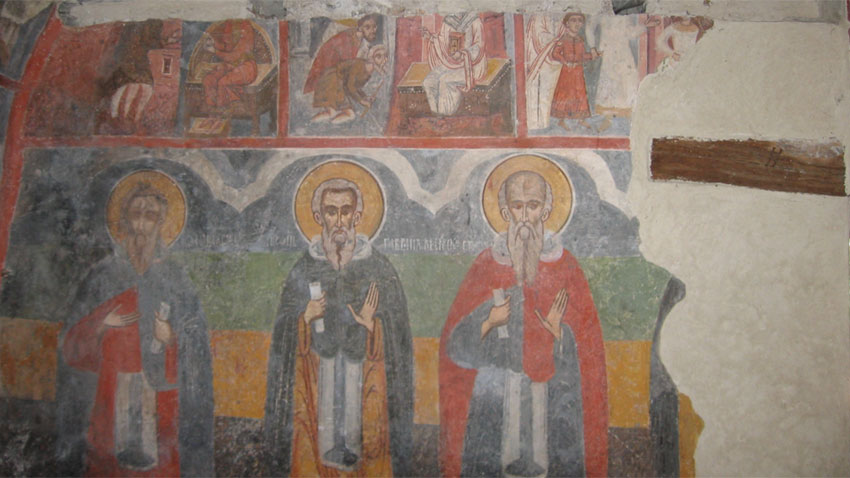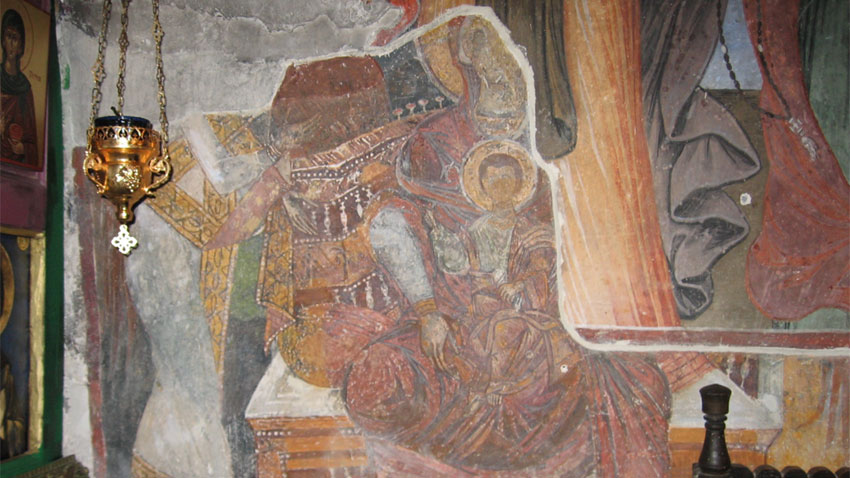The Belyova Church does not attract tourists with lavish decorations on the outside but everyone who goes there becomes amazed by the rich murals in vivid colours depicting countless biblical scenes and saints. One of the researchers of the church, archaeologist Veselin Hadzhiangelov, is also head of the Museum of History in Samokov. He is author of various articles about the Belyova Church and a participant in archaeological studies, so we asked him to tell us more about it:

"The church has been subject to archaeological studies for a long time. The Belyova Church is one of the few historical and archaeological sites which gained prominence thanks to the emerging Bulgarian journalism. Konstantin Fotinov was the first to write about it in „Lyuboslovie" and in his book "Obshtoe Zemleopisanie" (1849). He described it as one of the oldest churches in Samokov. He mentions that the church dates back to the Second Bulgarian Kingdom. The Museum in Samokov stores "History of the Belyova Church" - a manuscript written by researcher and church singer Stoyan Beshov in 1912. The author had gathered all legends and memories associated with the church and paid attention to many historical facts. I started my professional activities at the museum in 1992 and several years later took part in archaeological works at the site. In 1995 I had the chance to discover the relics of Saint Martyr Simeon of Samokov – a prominent saint of the pantheon of the new Bulgarian saints. He was hanged in 1737 by the Turks in the same place where 100 years later they would hang Bulgaria’s Apostle of Freedom - Vasil Levski. Archaeological work helped us find out that the temple was built on the remains of an early Christian church from the 6-th century. In the necropolis that existed near the church, we found valuable and precious objects. An interesting fact is that the church is actually called "Nativity of Mary," but is better known as Belyova church. It bears this name because the church has long been associated with the name of Boyar Belyo, who is believed to have built it. Studies of the temple were conducted in the 70s of last century. The last reconstruction of the church began in the 60s of 19th century when the church was literally dug out of the ground, as previously it was buried. Information about this is also provided by one of the most famous painters who created the latest murals - Nikola Obrazopisov."

The website of the museum reads that Belyova Church is the oldest and most significant archaeological site of the Middle Ages. How much of the original building has been preserved over the centuries?
"The studies in 2009 discovered additional premises next to the western facade of the church, dating back to the 6th century. Church and naos were erected on an early Christian church. The next church here was built around the 12th century. Archaeological works near the current church revealed many burials from a very long period of operation of the necropolis, starting from the XII th century and ending in 1867. After the invasion in the XIV th century the church was probably burned down. The murals are supposed to be restored somewhere in the XVI th century. They are very interesting and informative. What makes them unique is the depiction of the Seven Ecumenical Councils, Christ Pantocrator, and the Holy Trinity. Magnificent images, which many experts believe were the work of St. Pimen Zografski or some of his students. In all studies of early frescoes in Samokov, it was revealed that they have joint characteristics. Techniques that painters used, show of skills, probably acquired in Athos. "

Who created today’s iconostasis and murals in Belyova church?
"The iconostasis was completely restored. It is the work of renowned woodcarver from Samokov Stoycho Fandakov. The icons in the royal line are the work of famous painter - Georgi Klinkov. There are icons by Nikola Obrazopisov, too. More recent murals are the work of three artists: Nikola Obrazopisov, his assistants Dimitar Daskalov and son Zachary Zograf’s son - Hristaki Zahariev Zograf. "

Belyova Church is a monument of national importance. The church is active and works every day. In you happen to travel from Samokov to the resort of Borovets, find some time to stop at and be fascinated by the ancient church.
English: Alexander Markov
On the second day after Easter begins Bright Week. It is so called because of the light that Christ's Resurrection brings to the world. According to Orthodox tradition, it is a time when the Holy Apostles and the Virgin Mary are glorified. Bright Week..
Patriarch Daniil celebrated a divine service for the so-called Second Resurrection of Christ in the Sofia-based church of Saint Nedelya. Patriarch Daniil greets Bulgarians with “Christ is Risen” At the festive liturgy, texts from the Gospel..
Patriarch Danil of Bulgaria, Metropolitan of Sofia, greeted the faithful with the joyful words "Christ is risen!" In his Easter message, he called on Orthodox Christians to share the extraordinary joy of heaven with the world through a life of light and..

+359 2 9336 661
